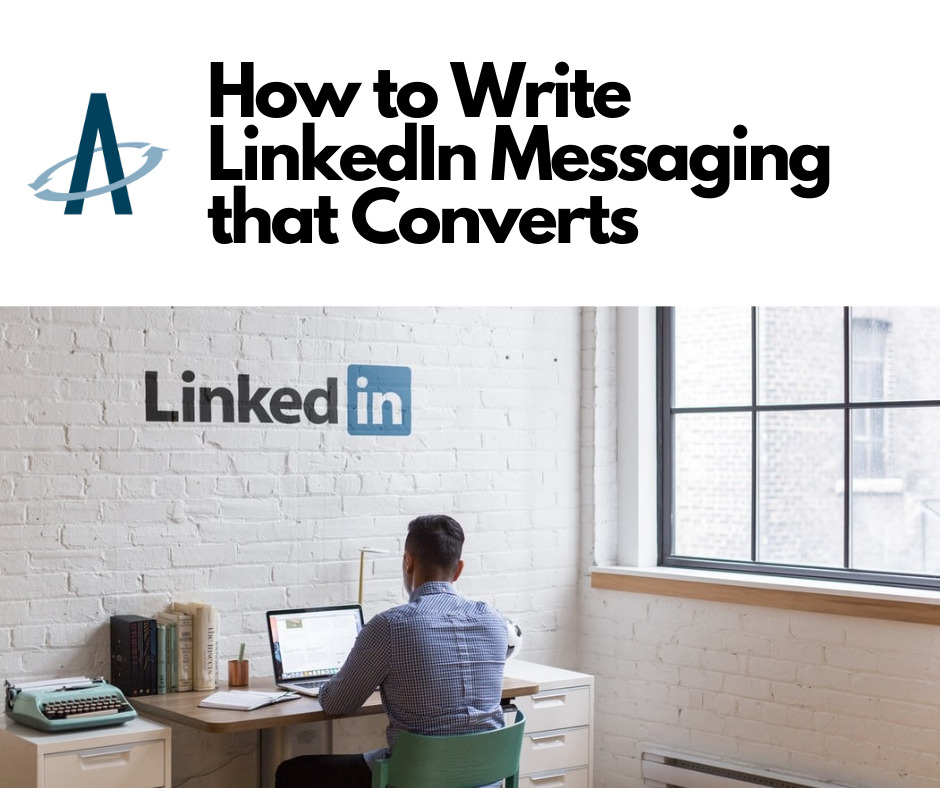LinkedIn Messaging: How to Write Messages that Convert
/in Blog, Posts /by The Artist EvolutionLinkedIn messaging can be an effective tool for building relationships with target audiences outside of your immediate network, but finding the right words to spark those relationships can be difficult.

The future of digital lead generation
LinkedIn is a promising and modern alternative to traditional B2B outreach strategies such as cold-calling and in-person visits, especially in light of the social distancing norms which developed in 2020 and will continue to have an impact for years to come.
Unlike with these more traditional strategies, individuals on LinkedIn are much more likely to be in a “business mindset” at the time that you reach out to them, making it a great addition to your existing sales outreach and nurturing process.
However, despite the vast potential that LinkedIn has — with its seemingly endless connection opportunities, targeting parameters, and ease of use — it can be hard to harness this potential if you do not have the right approach to your messaging.
Though professionals may be more receptive to building business relationships while they are on LinkedIn, you still have to earn their time and attention. The fact that LinkedIn is such an effortless and effective outreach tool means only that you will be one among many others trying to do the exact same thing: connect.
So, how do you stand out with just your words? How do you write LinkedIn messaging that converts?
The answer is… it depends.
How you approach your messaging depends entirely on your end goal; and the attainability of your end goal will directly affect how successful you are (or aren’t) on LinkedIn.
Only after you set an attainable goal should you embark on writing effective messaging, because if you set your goal too high you will inevitably fall short, and if you set it too low you will inevitably succeed (but at what gain?).
Once you set your goal to the right height, adopting the advice below will take your LinkedIn outreach to the next level.
1. It’s About More Than Your Words.
When writing messaging of any kind, it’s important to remember that your words do not exist in a vacuum. For your messaging to be effective, it has to work on a number of levels.
In the case of LinkedIn, this means sending messages from an approachable and well-built out profile — an optimized profile is one of the most commonly overlooked components of successful LinkedIn messaging.
First impressions matter for face-to-face encounters, but they also matter for LinkedIn. If your profile (from its picture to its content) does not immediately convey credibility, your connection and response rates will likely suffer.
Words can only do so much on their own. At the end of the day, you’re asking a person on LinkedIn to trust you — not just your words. So, before setting your next LinkedIn campaign in motion, make sure to fully optimize your profile.
2. Understand Your Audience — and Yourself.
Crafting effective messaging of any kind requires an accurate and thorough understanding of your target audience, especially that audience’s goals and the obstacles preventing them from attaining those goals.
To achieve this perspective requires an exercise in empathy — placing yourself in the mindset of the people you’re seeking to build relationships with.
To do this, it helps to stay up-to-date on your audience’s industry, especially its trends and important news; it’s also important to be aware of topical events that may be affecting businesses in that industry, either now or near in the future.
Once you have this down, then ask yourself how your product, service, insight, etc. can help your audience.
The answer to this question will serve as the foundation upon which you will build your messaging — it may not be up front and center; it may not even be explicitly stated; but it will be a crucial consideration throughout your writing process.
3. Connect by "Connecting"
Arguably the most important step in your LinkedIn messaging outreach is the connection message. After all, what good are your other messages, no matter how well-thought-out they are, if you cannot first convince someone to connect with you?
To avoid this, and to give yourself the best chance at success, your goal when writing a connection message should be to go beyond a mere LinkedIn “connection.” Instead, you should strive to use your initial message to pave the way for a genuine connection later on.
There are a number of ways to spark a connection within the short character limit provided by LinkedIn, but the most tried and true method — the one that works as effectively in the real world as it does on LinkedIn — is personalization.
Did you attend the same university or high-school as the person you’re trying to connect with? Do you have a mutual connection (that they will actually recognize)? Do you, or did you, live in the same area? Did you attend the same conference? The list goes on…
A person’s LinkedIn profile provides no shortage of conversation starters that are waiting to be used; you just have to find the one that best suits your aim and which makes the most sense given the nature of your outreach.
Once you find that point of connection — that “in” which will give you the best shot of an acceptance — make sure to keep the message short and sweet.
Here is an example of a connection message that our own agency used to spark conversations with Atlanta business owners during our recent expansion:
Hello, Susan. Our agency recently expanded into Atlanta, so I’m looking to expand my professional network here. I’d love to connect.
In this instance, the point of connection was the shared geographic region of Atlanta, but you can take it even further than that.
We opted for a slightly less personalized message because our goal was to build relationships with as many Atlanta businesses as possible, as quickly as possible; less personalization allowed for greater outreach efficiency.
Of course, a lack of personalization may lead to a decrease in connection and response rate, so it’s all about finding the right balance based on your goals.
However, regardless of your aim, you should always strive to give your connection message a personal touch, something that lets the person you’re trying to connect with know that you don’t just want to “connect” but connect.
Oftentimes, you will find that a conversation springs naturally from this initial connection message. If that happens — congratulations! — go with the flow of the conversation then gradually steer it in the direction of your end goal when (or if) the time is right.
If a conversation doesn’t naturally develop — or even if it does and you don’t know how to steer it in the right direction — the messaging gets trickier.
4: The Less “Pitchy” the Better
If you’re using LinkedIn as a sales outreach tool, you probably have a pitch that you want to eventually deliver.
But before you press the “send” button on that pitch, first ask yourself if the message you’re about to deliver is something that you, yourself, would respond favorably to — or even respond to at all.
If your message is overly “pitchy” or “salesy,” it runs a high risk of being ignored, or even worse, aggravating the very people you are trying to build a relationship with.
To avoid this from happening, you should strive to make your pitch come across like anything but a pitch. The most successful outreach messaging is both conversational in tone and professional in aim.
This, of course, is a difficult balance to find. It will take experimentation and adjustment, but eventually you will find a messaging approach that works for you.
Much like the connection message, it is also important to keep your opening message relatively short — not necessarily as short as the connection message, but not a novel, either. Professionals are busy, so they will naturally respond more favorably to concise messaging.
Overly long LinkedIn messages also run the risk of coming across like they have simply been copied and pasted. A lot of time goes into writing long messages, but if they give the appearance of a message that took five seconds to paste and send, they will be met with an equal amount of disinterest.
Instead of writing long messages, keep them centered around one key point, and do your best not to deviate too far from it.
When your message is written well, it will be hard for people to not respond to it — that is what you should be aiming for.
After you’ve written your message out, ask yourself, “What would I do if I saw this in my inbox? Would I feel inclined to reply?”.
If the answer to the first question is “I don’t know” — if the answer to the second question is “no” or even “maybe” — then it’s time to go back to the drawing (or, rather, writing) board.
5. Follow Up, But Do Not Chase
When it comes to follow-up messages, it’s always best to tread lightly.
Many people prefer not to check their LinkedIn frequently, so just because they haven’t responded to your message yet does not mean that they won’t in the future.
In our agency’s experience, we’ve found that many individuals will respond to messages days or even weeks after we have sent them.
That being said, a follow-up message can still be a helpful nudge—and, at the very least, a way to bump your message to the top of the recipients attention for when they finally do log in.
In most cases, one follow-up message suffices. Writing more than that runs the risk of coming across impatient and intrusive — like you are chasing them down instead of following up.
Furthermore, if a person did see your message and deliberately chose not to respond to it, sending multiple follow-up messages will only harm your efforts.
If someone saw your message and simply forgot to respond to it — which is very likely given the distraction-filled age that we live in — one follow-up should be all you need to remind them of your message.
From then on, it is simply a waiting game — a game that rewards patience.
When writing your follow-up message, it’s best to keep it simple. A gentle reminder of your previous message, in addition to a small note that was not included in your initial message, is all that you need.
And just like the other two messages, keep the follow-up short and sweet, and personalize it to the degree that you can.
If you follow these tips, you will be well on your way to writing more effective LinkedIn messaging.
Are you looking for help with your LinkedIn messaging? Contact our team today. We help numerous businesses build relationships and book meetings through LinkedIn.

About The Artist Evolution
The Artist Evolution (TAE) is a full-service marketing agency headquarted in Northwest Arkansas. Since 2007, we have been helping businesses across the nation thrive through strategic marketing and uncompromising execution.
To learn more about our agency, send us an email at info@theartistevolution.info



